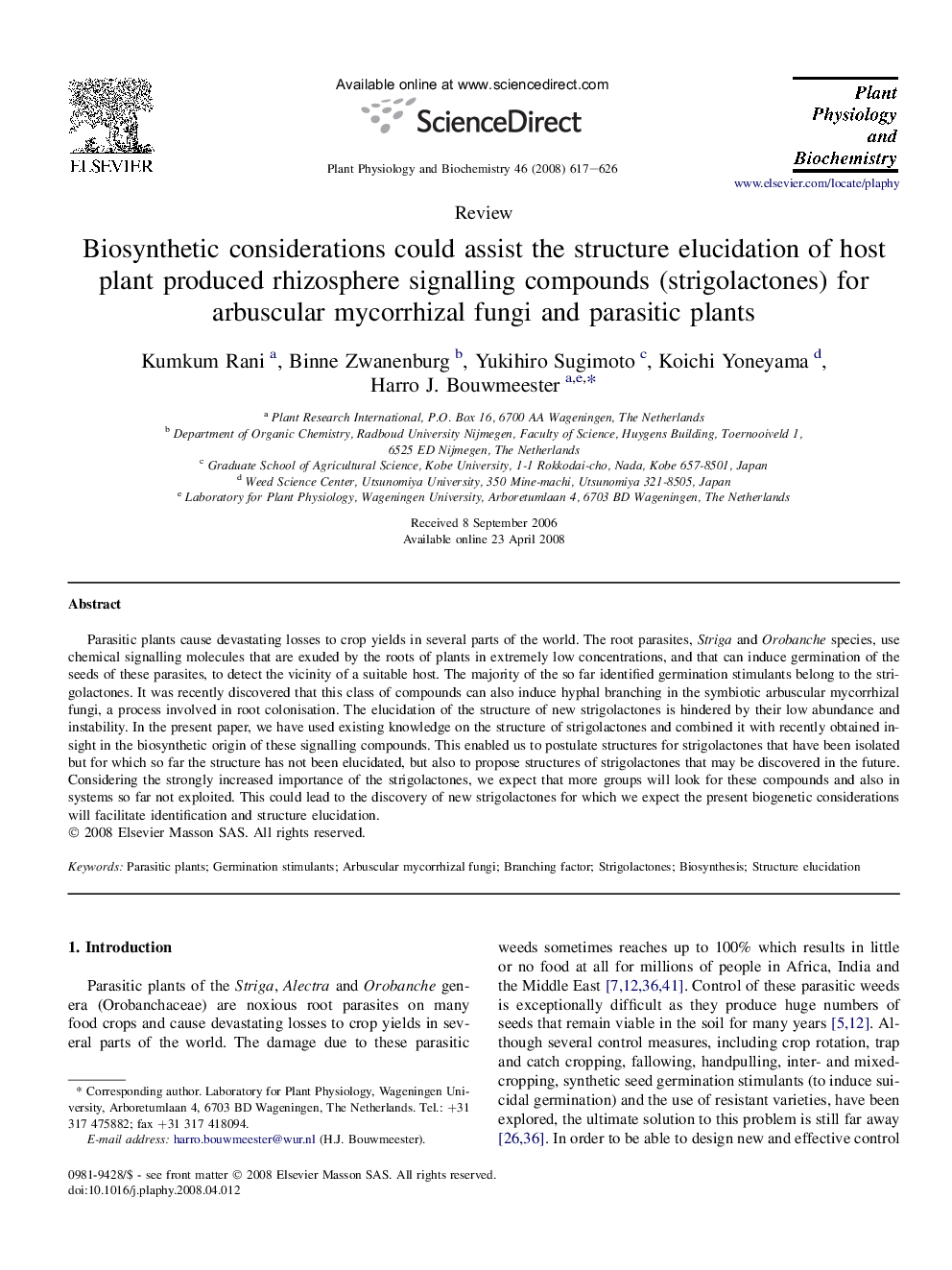| Article ID | Journal | Published Year | Pages | File Type |
|---|---|---|---|---|
| 2016801 | Plant Physiology and Biochemistry | 2008 | 10 Pages |
Parasitic plants cause devastating losses to crop yields in several parts of the world. The root parasites, Striga and Orobanche species, use chemical signalling molecules that are exuded by the roots of plants in extremely low concentrations, and that can induce germination of the seeds of these parasites, to detect the vicinity of a suitable host. The majority of the so far identified germination stimulants belong to the strigolactones. It was recently discovered that this class of compounds can also induce hyphal branching in the symbiotic arbuscular mycorrhizal fungi, a process involved in root colonisation. The elucidation of the structure of new strigolactones is hindered by their low abundance and instability. In the present paper, we have used existing knowledge on the structure of strigolactones and combined it with recently obtained insight in the biosynthetic origin of these signalling compounds. This enabled us to postulate structures for strigolactones that have been isolated but for which so far the structure has not been elucidated, but also to propose structures of strigolactones that may be discovered in the future. Considering the strongly increased importance of the strigolactones, we expect that more groups will look for these compounds and also in systems so far not exploited. This could lead to the discovery of new strigolactones for which we expect the present biogenetic considerations will facilitate identification and structure elucidation.
